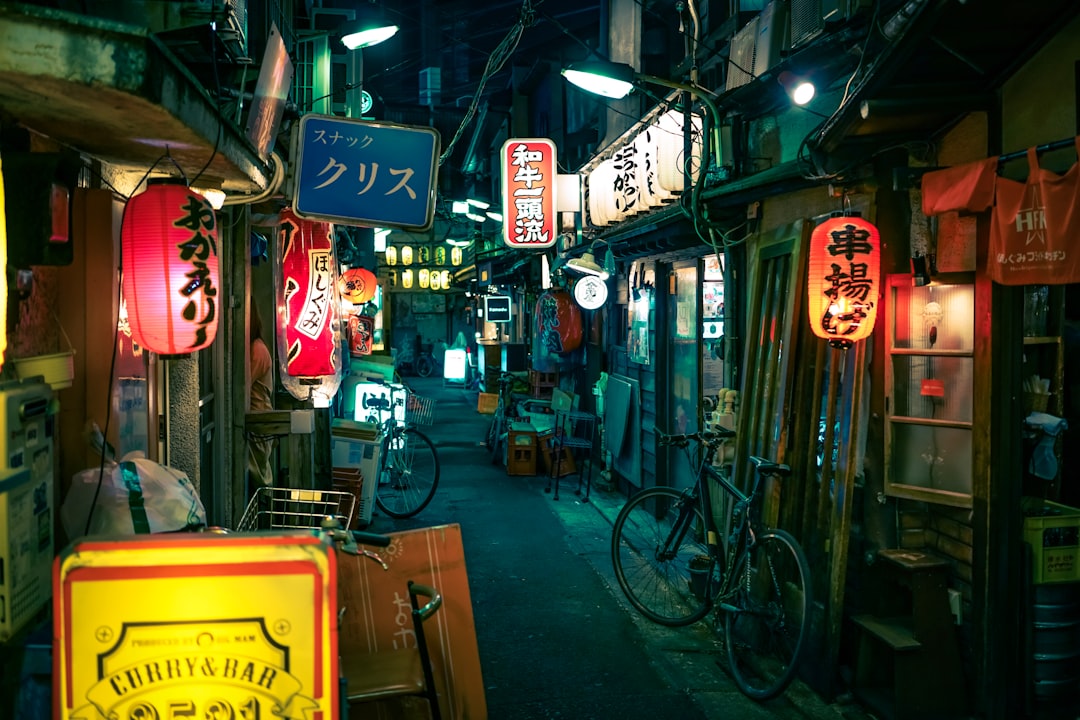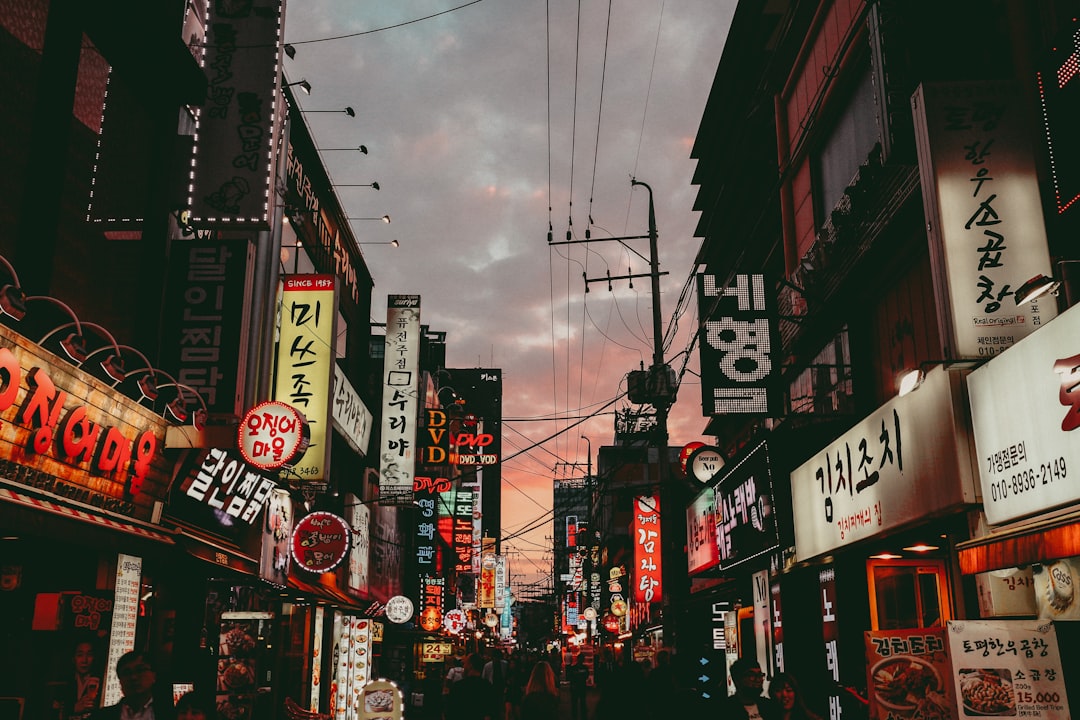Chinese, Korean, and Japanese are considered to be among the hardest languages for a native English speaker to learn. Each one is a serious time investment (and an exciting journey) that will likely take years.
Having said that, you can learn to differentiate their writing systems in literally five minutes.
(Mandarin) Chinese
Chinese dialects/languages are spoken by around 1.3 billion people, which represents approximately 16% of the world’s population. These dialects are different enough that a speaker of one (say Mandarin) wouldn’t understand a speaker of another (say Cantonese), but most of the languages are united by their use of Chinese characters. Most of the non-standard languages and dialects are unwritten, and a portion of their vocabulary may lack proper Chinese characters, though many people have tried to assign rare characters or invent characters for such words. This is primarily how colloquial Cantonese is written.
Considered to be logograms, roughly meaning that they represent ideas rather than representing sounds, Chinese characters come in two major flavors: simplified and traditional. The simplified forms are used in China, Singapore and Malaysia, while the traditional forms are used in Taiwan, Hong Kong and Macau.
If you have never studied Chinese characters before, it might be very difficult to differentiate the traditional and simplified characters. Sometimes they look quite similar: compare traditional 來 vs simplified 来, meaning come. Other times the simplification is much more noticeable: compare traditional 買 vs simplified 买, meaning buy.
Take a look at the example sentence below:
- Traditional: 今天天氣很好。
Simplified: 今天天气很好。
Pinyin: Jīntiān tiānqì hěn hǎo.
English: The weather is nice today.
Can you see the only character that differs between these two sentences? The goal of the simplifying the Chinese characters wasn’t to make a totally new writing system, but rather (as the name implies) to make a complex writing system a bit easier to write. Many of the “easier” characters weren’t modified at all.
Here’s another few examples:
- Traditional: 謝謝您的光臨。
Simplified: 谢谢您的光临。
Pinyin: Xièxiè nín de guānglín.
English: Thank you for visiting. - Traditional: 你有對任何藥物過敏嗎?
Simplified: 你有对任何药物过敏吗?
Pinyin: Nǐ yǒu duì rènhé yàowù guòmǐn ma?
English: Do you have any allergies to medicines?
Recognizing Chinese
If you need to differentiate simplified vs traditional characters, your best bet is to look for consistency. A sentence written with traditional characters will look quite uniform, but if you’re looking at a sentence that is written with simplified characters, you’ll likely notice some spatial discrepancies. For example, from the 2nd example sentence, compare (您…臨) vs (您…临).
If you don’t need that level of detail and simply need to know whether something is or isn’t Chinese, then look for these things when analyzing a sentence:
- Many blocky, complex characters that consist of many strokes
- No spaces between any of the characters
- If you see little open circles that are floating in the middle of the lines of the text, that's the Chinese full stop (period).

Japanese
Japanese writing mixes three alphabets: Chinese characters (called Kanji), hiragana, and katakana. The characters are logograms, just like their Chinese counterparts, but the other two alphabets are syllabries — each symbol is tied to a specific sound, just like our alphabet. (Both hiragana and katakana are derived from the Chinese characters. You can read a bit more about that story in this blog post.)
The Hiragana has 2-3 "curvy" strokes in contrast to the straight lined Kanji. Likewise the Katakana are 2-3 "rigid" stroke versions of the Hiragana. Each of the three writings systems has a purpose in Japanese.
- Hiragana are more curvy in appearance and are mostly used for grammatical information and inflections.
- Katakana are more angular/straight in appearance and are used to write foreign loan-words.
- Kanji are just like the Chinese characters we mentioned above, but their pronunciations are different in Japanes and Chinese
Take a look at the following sentence, which mixes all three alphabets:
- Japanese: あなたはどの位の頻度でニュースを見ますか?
Romaji: anata wa dono i no hindo de nyuusu wo mimasuka
English: How often do you read news?
To break that down for you:
- あなたはどの...の...で...を...ますか are all hiragana.
...位...頻度...見 are all kanji.
ニュース are all katakana.
Recognizing Japanese
The easiest approach is simply to look for a variety of characters. If you some Chinese characters in a sentence alongside some things that aren't Chinese characters, that's Japanese.
Here's a sentence in both Japanese and Mandarin, for reference.
- Japanese: 私の弟は銀行に勤めています。
(Mandarin) Chinese: 我弟弟在銀行工作。︁
English: My brother works in a bank.
If you need a bit more help, you can also look for small open circles. Rather than floating in the middle of a line as they did in Chinese, however, Japanese full stops sit immediately to the bottom-right of the final character — similar to English fullstops.

Korean
Whether you’re in North or South Korea, the language is written with an alphabet known as Hangul. Interestingly enough, while this alphabet was created almost 600 years ago, it only became Korea’s primary written script in 1945. It took so long to catch on because Chinese characters (called hanja) were traditionally used to write Korean, the educated class of Koreans were familiar with the characters, and it was primarily the educated class who were reading things.
The final push from hanja to Hangul took place following the end of World War II, when Korea gained independence from Japan. The Hangul can be learned much more quickly than the hanja: the alphabet consists of 14 symbols representing specific consonants and 10 symbols representing specific vowels that get assembled into syllable blocks.
As a side note, the Hangul are somewhat unique in that it’s a featural writing system. Leaving the jargon aside, that roughly means:
- ㅁ, the character for /m/, looks sort of like your lips are joined together (which happens when you create the /m/ sound)
- ㄱ, the character for /k/ sounds, represents the shape of your tongue when saying sounds with K or G
- ㄴ, the character for /n/, also represents your tongue shape — the tip of your tongue reaching towards the alveolar ridge (the gummy ridge just behind the back of your teeth)
- ㅅ, the character for /s/, if you use your imagination, looks like your tongue approaching the back of your top teeth
- ㅇ, the character for /ŋ/ (as in sing), looks like the back of your mouth (say ngggg and see what you feel vibrating)
Recognizing Korean
To recognize that something is Korean, look out for these things:
- There are spaces between Korean words, unlike Japanese or Chinese.
- Relatively simple blocky characters — whereas Chinese was complex, Korean characters look very tidy and will usually have only a few strokes each
- Remember how we said that Hangul symbols are made by mixing and matching smaller symbols for specific consonants and vowels? Whereas Chinese and Japanese symbols are quite varied, the Hangul have lots of recycled parts. If you see multiple circles ㅇ or straight lines like ㅣor ㅡ , you’re probably looking at Korean.
- If you see a little dot that looks like a period, you’re looking at Korean — Chinese and Japanese use open circles ( 。)instead
Now try to identify these features in the following sentences:
- Korean: 앉을 곳이 없네요.
Romaja: anj-eul gos-i eobsneyo.
English: There is nowhere to sit. - Korean: 저는 가끔 걸어서 출근해요. 그러나 자주 그러지는 않아요.
Romaja: jeoneun gakkeum geol-eoseo chulgeunhaeyo. geuleona jaju geuleojineun anh-ayo.
English: I sometimes walk to work. But not often.

In summary
In other words, the key is being able to recognize Chinese characters when you see them. If you can do that, you'll definitely be able to differentiate these three alphabets.
- Chinese: Look for uniform and complex blocks that contain many strokes.
- Japanese: Identify a few things that are Chinese characters and a few things that aren't.
- Korean: Confirm that a sentence has no complex blocks of (Chinese) characters
That in mind, here's all three writing systems to compare:
Now let’s compare Korean with Chinese:
- (Mandarin) Chinese: 我弟弟在銀行工作。
Japanese: 私の弟は銀行に勤めています。
Korean: 제 남동생은 은행에서 일해요.
English: My younger brother works at a bank.
Join us and Make an Impact!
We are on a big mission to bring the world access to any language, and we invite you to join us!
Learn more at viva.glossika.com
You May Also Like:




